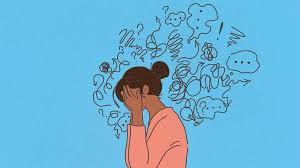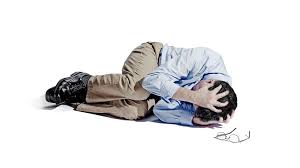In the current digital era, there are many tools and services available through technology to assist people in efficiently managing their anxiety. Innovations in technology, such as wearables and smartphone apps, online therapy platforms, and virtual reality, can enhance conventional therapeutic methods. This article examines the several ways in which people can use technology to reduce anxiety and take charge of their mental health.
An Awareness of Anxiety in the Digital Era
Anxiety disorders, which impact millions of individuals worldwide in all age groups, are among the most common mental health diseases. Anxiety can be made worse for many people in the digital era by things like social media influence, information overload, and continual connectivity. Fortunately, there are also creative ways to handle and manage anxiety thanks to technology.
Anxiety Disorder Types
Generalized anxiety disorder (GAD), social anxiety disorder, panic disorder, phobias, and obsessive-compulsive disorder (OCD) are among the ailments that fall under the umbrella of anxiety disorders. Although the symptoms and difficulties associated with each type of anxiety illness vary, technology can provide tools and assistance for coping with anxiety in all its manifestations.
Using Technology to Help Manage Anxiety
Smartphone Apps to Reduce Anxiety
Apps for mindfulness and meditation: To help people unwind and reduce stress, apps like Headspace, Calm, and Insight Timer provide guided mindfulness exercises and meditation sessions.
Apps for breathing and relaxation
These apps assist people reduce the symptoms of anxiety by offering progressive muscle relaxation, breathing exercises, and relaxing music.
Apps for Cognitive Behavioral Therapy (CBT)
MoodMission and Woebot, two CBT-based apps, provide evidence-based methods and resources for overcoming unfavorable thought patterns and controlling anxiety.
Journaling Apps
Users can log their thoughts, feelings, and actions with apps like Moodnotes and Daylio, which helps with self-analysis and emotional control.
Apps for virtual reality (VR)
Apps and experiences like Virtual Calm and Relax VR transport users to tranquil settings, providing a virtual haven from stressful circumstances.
Wearable Technology for Monitoring Anxiety
Heart Rate Monitors
By tracking heart rate variability, wearable technology such as smartwatches and fitness trackers can reveal stress levels and possible anxiety causes.
Biofeedback Devices
By measuring physiological factors like heart rate, breathing patterns, and skin conductance, biofeedback wearables like Spire and WellBe assist people in learning to control their stress reaction.
Sleep Trackers
Anxiety and poor sleep quality are frequently linked. Wearable sleep trackers, like the Fitbit and Oura Ring, can monitor sleep patterns and offer suggestions for better sleep hygiene, which can help to lessen the symptoms of anxiety.
Platforms for Online Therapy and Remote Assistance
Services for Teletherapy
People can easily reach qualified therapists by video, phone, or messaging on online therapy platforms like BetterHelp, Talkspace, and Amwell. This allows them to receive help from the comfort of their own home.
Support Groups and Forums
For those who are experiencing anxiety, online groups and forums like 7 Cups and the Anxiety and Depression Association of America (ADAA) offer tools, a feeling of community, and peer support.
Digital Resources for Self-Management in Mental Health
Electronic Mood Monitors
Users can track their mood swings over time with apps like Moodpath and T2 Mood Tracker, which can help them spot patterns and anxiety triggers.
Chatbots for therapy
Wysa and Replika, two AI-powered chatbots, offer sympathetic dialogue and coping mechanisms grounded in the ideas of cognitive behavioral therapy (CBT) and mindfulness.
Online Self-Help Resources
An abundance of knowledge, articles, and self-help resources are available for comprehending and managing anxiety on websites and platforms like Anxiety.org, Psycom, and Mind.org.uk.
The Best Techniques for Managing Anxiety with Technology
Establish Boundaries
To foster possibilities for rest and self-and other-connection, set aside specific times and areas for tech use.
Limit Screen Time
To avoid sensory overload and information overload, consume digital content with awareness and establish time limits for using screens.
Organize Your Digital Space
Curate your digital information and social media feeds so that you are exposed to less stressful or trigger-filled material and more uplifting, inspirational, and positive sources.
Engage in Digital Detox Practice
Take regular breaks from technology to partake in offline pursuits that foster creativity, rest, and a sense of connectedness to the natural world.
Combining Technology and Conventional Methods
Speak with Mental Health Professionals: Before implementing any new technology-based therapies, be sure they are in line with your treatment plan and objectives.
Integrate Online Resources with in-person Counseling
Instead than using technology as a replacement for conventional treatment methods like medicine or cognitive behavioral therapy (CBT), use it as a supplement.
Monitor Development and Introspection
Utilize digital tools to record your progress, keep an eye on your symptoms, and think back on your experiences to learn which coping mechanisms work best for you while dealing with anxiety symptoms.
Setting Security and Privacy First
Investigate Platforms and Apps
Check the privacy policies, data security protocols, and ethical guidelines of any mental health apps or online therapy platforms before installing or subscribing to them.
Safeguard Personal Data
When providing digital mental health tools and platforms with sensitive personal information or data, exercise caution and make sure the platforms abide by applicable privacy laws, such as the Health Insurance Portability and Accountability Act (HIPAA) in the US.
In summary
In the digital age, technology provides an abundance of tools and resources for anxiety management, enabling people to actively participate in their mental health and overall well-being. Numerous tools are available to support anxiety management and foster resilience, ranging from wearables and smartphone apps to online treatment platforms and digital self-help materials. Through the utilization of technology in conjunction with conventional treatment methods, people can develop efficient coping mechanisms, strengthen their resilience, and lead more balanced and healthy lives while navigating the obstacles of contemporary life.





